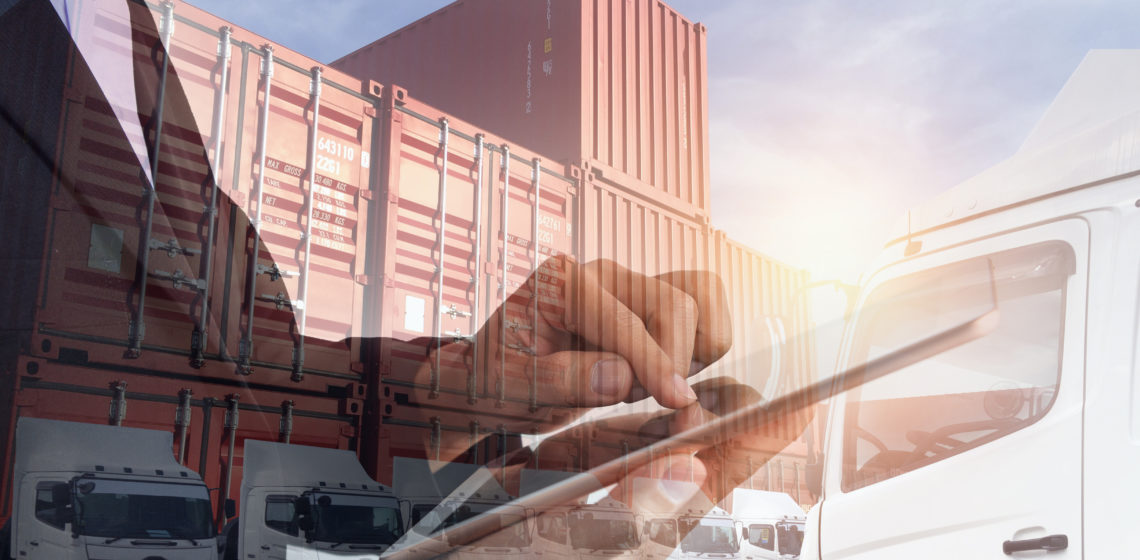
How Smart Logistics is Changing Logistics Optimization
March 11, 2020
In this age of Industry 4.0, leaders across the supply chain are looking to harness digitization, encourage a data-driven culture, and effectively implement automation. Smart logistics represent another opportunity, particularly with the possible enhancements to existing logistics optimization efforts.
There are many potential advantages to digital transformation and data-fueled decision-making, in order to streamline your OEM’s partner network. These can include:
- supply stabilization
- minimization of warranty claims
- near or total elimination of disruptions
- reductions in wasteful spending
- order management optimization
When it comes to logistics optimization, however, smart technology is having a positive impact on transportation costs, project spend, and return on your capital expenditures. Let’s explore how.

Why Logistics Optimization
Logistics and supply chain optimization, when managed correctly, can yield greater workforce efficiency, improved cost management, and an overall better return on investment.
Logistics optimization, in particular, can bring several benefits to today’s equipment manufacturers, such as:
- Improved product availability
- Reduced infrastructure costs
- Enhanced workforce efficiency
- Higher asset utilization
- Lower inventory levels
There’s always room for improvement in logistics. Encompassing the entire supply chain — from raw materials sourcing to end delivery — logistics optimization considers several different levers. These might include:
- Transportation routes
- Transportation modes
- Service level
- Storage capacity
- Product flow
- Worker capacity
- Warehouse processing
Today, with the evolution of smart technology, optimizing any of these levers is becoming more and more manageable for the innovative OEM.
What Smart Logistics Involves
Traditional supply chain solutions aren’t responsive enough. “Logistics managers often don’t find out about delayed or misrouted assets until those assets arrive hours late—or not at all—at their destinations. These hours translate into lost productivity, delayed production and damaged client relationships,” Sigfox noted.

New technologies and data are combining to help achieve supply chain competitiveness. A logistics operation might use radio-frequency identification in the warehouse to improve product flow and enhance worker capacity. Warehouse automation also provides another information source for big data and data analytics.
The Internet of Things (IoT), through smart meters on routes or sensors on vehicles, is also providing greater transparency and adaptability. This technology supports real-time tracking of shipments as well as optimized route planning and improved fleet maintenance. DHL, for instance, boasts smart trucks with sensors “capable of regulating temperature” and “tracking cargo…in real-time,” which also promote anti-theft measures.
Supply chain transparency is further bolstered by blockchain. This technology provides a digital ledger of transactions to help reduce waste, cut labor costs, track and trace stock, and keep supply information up-to-date. European retailer Carrefour uses blockchain to track its iconic chicken product line Carrefour Quality Line Auvergne.
Overlapping these many sources of information into a Geographical Information System (GIS) helps with visualization of the global logistics operation. Or the data can be processed and analyzed via integrations with Enterprise Resource Planning or Distribution Requirement Planning solutions. By improving inventory control and better understanding customer demand, market forces, freight costs, and geographical factors, these modern innovations can dramatically improve logistics.
How Smart Tech Supports Logistics Optimization
Global logistics is complicated, with many interconnected threads of information. Think of all those abandoned, wired headphones kept in a junk drawer waiting to be untangled, and multiply that image by 50.
Smart logistics adds more data points, but once that information is harnessed, it can lead to logistics optimization. An Industry Week article on smart logistics provided concrete examples of technology maximizing efficiency and increasing cost effectiveness:
- A life sciences organization “identified 13 percent potential baseline freight cost savings by analyzing logistics management processes and finding opportunities to increase consolidation of shipments.”
- “A chemicals leader achieved five to seven percent cost savings through revisiting processes related to shipping frequency, reassignment of supplier-warehouse combinations and set up of ‘milk-runs.’”
These examples of smart technology driving logistics optimization also represent business moves that support sustainability goals. Consolidating shipments and revisiting shipping frequency can help curb carbon emissions from product transportation.
Smart logistics also takes advantage of technology to take a deeper dive into logistics processes. Identifying opportunities to simplify or automate process, reduce hand-offs and support greater worker efficiency, can all lead to improvements that net measurable results.
Explore the Logistics Optimization options available for your fabricated parts shipping with Miller Fabrication Solutions, such as returnable and stackable container programs and truckload maximization, by scheduling your consultation today.
You Might Be Interested In
Logistics Optimization
April 17, 2019
The Place for Blockchain in Manufacturing